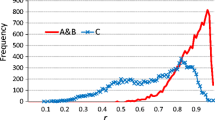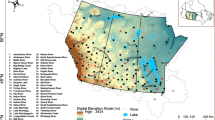Abstract
Building performance simulation is increasingly used to aid in decision making about the design, construction, retrofit, operation, and maintenance of new and existing buildings. Such simulations require a complete set of meteorological data sampled at regular intervals. A data file with even a single missing measurement value becomes useless for simulation. Unfortunately, it is extremely rare to find such a perfect body of data. Measurement errors and sensor failure are frequent occurrences in meteorological data collection and are among a host of reasons for missing measurement values. To overcome this problem, simulation users may rely on Typical Meteorological Years (TMYs) instead of actual historical data, or they may apply an existing interpolation method to fill the gaps in historical data. Historical data is often preferable, since TMYs fail to account for atypical weather conditions. Clearly, this could lead to poor decision making when the decision outcomes are strongly affected by the occurrence of atypical conditions. This paper presents several methods for statistical interpolation between discrete weather-data points. A normalization procedure is first used to transform meteorological data into a set of Gaussian-distributed sample data. Next, a vector autoregressive model is calibrated using the normalized site-specific meteorological data, and is then used to determine the most likely value for one or more missing data points. Variations of the model are described to address specific combinations of missing data, and the methods are validated for several cities in the USA. Results show that the normalization procedure is the most important contributor towards a significant improvement in accuracy relative to other interpolation methods.
Similar content being viewed by others
References
Acock M, Pachepsky YA (2000). Estimating missing weather data for agricultural simulations using group method of data handling. Journal of Applied Meteorology, 39: 1176–1184.
Aguiar R, Camelo S, Gonçalves H (1999). Assessing the value of typical meteorological years built from observed and from synthetic data for building thermal simulation. In: Proceedings of 6th IBPSA International Conference, Kyoto, Japan, pp. 627–634.
Bhandari M, Shrestha S, New J (2012). Evaluation of weather data sets for building energy simulation. Energy and Buildings, 49: 109–118.
Canale RP, Chapra SC (2009). Numerical Methods for Engineers. New York: McGraw Hill.
Chatfield C (2004). The Analysis of Time Series: An Introduction, 6 edn. Boca Raton, USA: CRC Press.
Eaton ML (1983). Multivariate Statistics: A Vector Space Approach. New York: John Wiley & Sons.
Gorman RM (2009). Intercomparison of methods for the temporal interpolation of synoptic wind fields. Journal of Atmospheric and Oceanic Technology, 26: 828–837.
Guan L, Yang J, Bell JM (2007). Cross-correlations between weather variables in Australia. Building and Environment, 42: 1054–1070.
Hassan R (2009). A comparison of the accuracy of building energy analysis in Bahrain using data from different weather periods. Renewable Energy, 34: 869–875.
Hong T, Jiang Y (1995). Stochastic weather model for building HVAC systems. Building and Environment, 30: 521–532.
Hong T, Chang W-K, Lin H-W (2013). A fresh look at weather impact on peak electricity demand and energy use of buildings using 30-year actual weather data. Applied Energy, 111: 333–350.
Hu H (2009). Risk-conscious design of off-grid solar energy houses. PhD Thesis, College of Architecture, Georgia Institute of Technology, USA.
Huang YJ, Crawley DB (1996). Does it matter which weather data you use in energy simulations? In: Proceedings of American Council for an Energy Efficient Summer Study, Pacific Grove, CA, USA.
Lee BD, Sun Y, Hu H, Augenbroe G, Paredis CJJ (2012). A framework for generating stochastic meteorological years for risk-conscious design of buildings. In: Proceedings of 5th National Conference of IBPSA-USA, SimBuild 2012, Madison, WI, USA.
Marion W, Urban K (1995). User’s Manual for TMY2s: Derived from the 1961–1990 National Solar Radiation Data Base. National Renewable Energy Laboratory, USA.
de Wilde P, Augenbroe G, van der Voorden M (2002). Design analysis integration: Supporting the selection of energy saving building components. Building and Environment, 37: 807–816.
Rosenblatt M (1952). Remarks on a multivariate transformation. The Annals of Mathematical Statistics, 23: 470–472.
U.S. Energy Information Administration (2012). Annual Energy Review 2011. DOE/EIA-0384(2011).
Wilcox S, Marion W (2008). Users Manual for TMY3 Data Sets. National Renewable Energy Laboratory, USA. Available: http://www.nrel.gov/docs/fy08osti/43156.pdf.
Author information
Authors and Affiliations
Corresponding author
Rights and permissions
About this article
Cite this article
Kasam, A.A., Lee, B.D. & Paredis, C.J.J. Statistical methods for interpolating missing meteorological data for use in building simulation. Build. Simul. 7, 455–465 (2014). https://doi.org/10.1007/s12273-014-0174-7
Received:
Revised:
Accepted:
Published:
Issue Date:
DOI: https://doi.org/10.1007/s12273-014-0174-7




